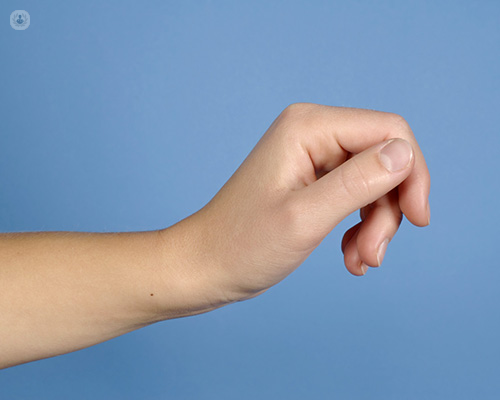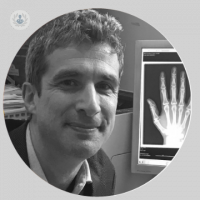Carpal tunnel surgery
Mr Andrew Fitzgerald - Orthopaedic surgery
Created on: 11-13-2012
Updated on: 08-03-2023
Edited by: Aoife Maguire
What is carpal tunnel surgery?
Carpal tunnel syndrome is a condition which causes numbness, tingling, or pain in the hand. It is a common condition which occurs due to compression of the median nerve in the wrist, which runs down the carpal tunnel, a narrow passage on the side of the wrist. The nerve controls movement in the thumb, and fingers, except the little finger. Carpal tunnel surgery is indicated in some cases to correct long-lasting cases of carpal tunnel syndrome.
Why is carpal tunnel surgery performed?
Carpal tunnel syndrome often clears up by itself or with therapy, but in some cases symptoms can go on for a long time, and the condition may get worse. Muscles in the hand and wrist can weaken, and everyday movements such as grasping or gripping may become more difficult to perform. Surgery is indicated in cases of long-lasting carpal tunnel syndrome, when other treatment methods have been explored and been unsuccessful.
What does it involve?
Carpal tunnel surgery is usually performed either as open or endoscopic surgery. In open surgery, a larger cut is made, and recovery time is generally longer. In endoscopic surgery, smaller cuts are made and a tiny camera is inserted which helps guide the surgeon as they cut inside the joint and ligament. However, in both cases the ligament around the carpal tunnel is cut, which relieves pressure around the median nerve. After surgery the ligament is brought back together, but the median nerve has more space to pass through, which permanently relieves the compression.
How to prepare for it
Before surgery, the orthopaedic surgeon will explain exactly what type of procedure they will be performing, and what to expect. Before surgery, medication will be discussed and blood thinning medications must be avoided, as they can increase bleeding during surgery.
The patient should arrange for someone to escort them from the hospital, as they will not be able to drive after the surgery has been performed.
Post-operative care
After the operation, the wrist and surrounding area will be sore and painful, with some swelling and stiffness. A bandage is put in place and this will be kept on for 1-2 weeks. Some over-the-counter medications may help with pain relief. During the recovery period, exercises can be done which will be advised by the surgeon. This helps to prevent the fingers from getting stiff, but it is important to avoid straining them.
In the period directly after surgery (2 weeks afterwards), care should be taken, making sure to only perform light tasks and light movements. Return to normal movement can be made slowly, over a period of time. It usually takes around 10-12 weeks for strength to fully return.

















